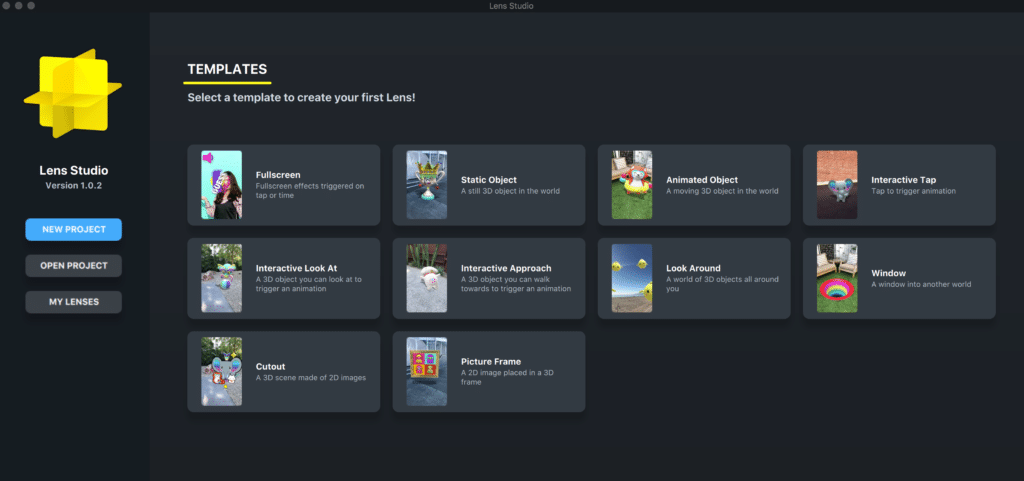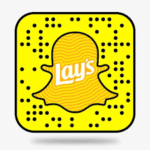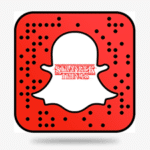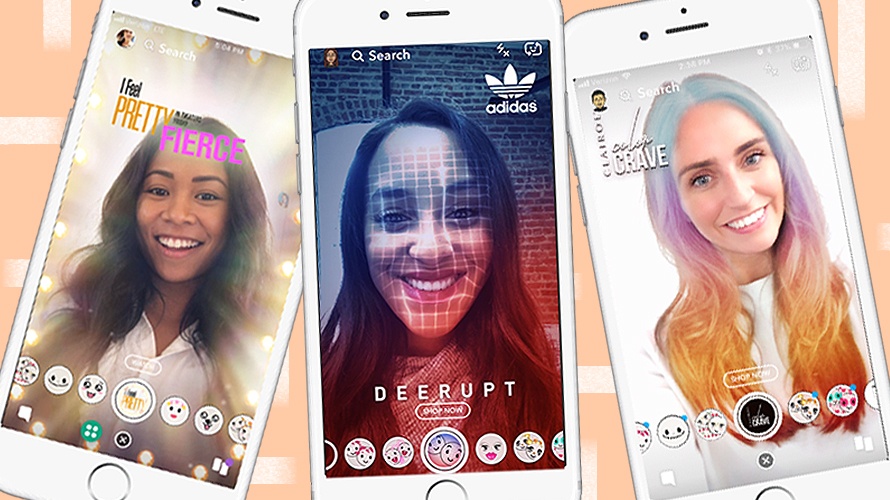Augmented Reality advertising has arrived and while marketers are eager to get their brands in on the action, many aren’t entirely sure where to start or what their options are. High level: AR ad experiences are available in-app and on mobile web. The two major apps where brands can build and deploy AR creative are Facebook and Snapchat. Alternative to the walled gardens, the route with the greatest scale, and our bread and butter, is mobile web. Comprehensive AR campaigns may leverage all three. But how? And where to start?
Not to worry, we’re here to help! In the following pieces, we’ll explain best practices for augmented reality advertising on Snapchat, Facebook, & Mobile Web, as well as how to use the same assets across platforms.
We’re going to focus this first post on in-app augmented reality advertising experiences, specifically within Snapchat. For a deeper dive into what makes a compelling AR ad campaign, check out our most recent blog post aggregating our favorite AR campaigns to date. In the meantime, let’s review the basics.
Augmented Reality Advertising on Snapchat – How It Works
There are two types of “sponsored” interactive AR lenses on Snapchat: World lenses (using the rear-facing camera) and face lenses (using the front-facing camera). Both include 2 & 3-dimensional designs tracked to points in the user’s world.

For advertisers, the path to sponsored lens distribution is different. Let’s start with self-serve creative. In December 2017, Snapchat launched Lens Studio for Mac & Windows desktop computers, allowing advertisers and regular users to create 2- & 3-dimensional AR World lenses. Additional effects may be deployed into a lens, such as sizing and placing characters, and adapting to movement of the camera around and within the design via a scripting API. There is no formal approval process, but the lens must follow Snap company guidelines.

Recently Lens Studio was updated to include face lens capabilities. This means users (including advertisers) can now create both World and face lenses on their own via Lens Studio. When a lens has been finalized, a unique Snapcode and deep link are created. This Snapcode works for 1 year from its creation, allowing users to access it multiple times. When scanned from within the Snapchat app, the lens will open, and remain available for 24 hours. What is not currently possible via AR Studio lens creation is targeted distribution to the Snapchat ecosystem. Delivery of these lenses depends solely on organic sharing of the link and/or snapcode.
Real Quick
For fun, check out a few of the Snapcodes we’ve tried and loved:




Deploying branded lenses as ads within the Snapchat ecosystem is a different story entirely. Snapchat has yet to open up the creative process to the general public and instead has partnered with 15+ vetted ad partners to handle creative needs from strategy to execution. This goes for both World and face lenses. Brands work directly with these partners to create and deploy their lenses, with a wide range of creative flexibility in terms of user experience. A few in-campaign features available include:
-Option to use varying triggers within an experience (raise eyebrows & tap on screen)
-Ability to use two different lens types to include two users in the same frame
-Ability to create & deploy two different lenses – one for the front and one for the rear-facing camera
Once live, these lenses are available in the main carousel within the Snapchat app, activated by tapping. The pricing structure generally starts at $40k/day plus an agreed upon CPM ranging from $8-20 with holidays, events, and weekends costing more. Advertisers work with Snap directly to buy these placements. There is another route for accessing sponsored lenses on a CPM basis and this is as a swipe up from a Snap vertical video or image interstitial ad. While not currently available in the self-serve Snapchat ad platform, these can be purchased at a $3-8 CPM fee through Vertebrae’s partnership with Snap, or with Snap directly.
The Latest
Most recently, Snapchat released what it’s calling “Shoppable AR“. Retailers will now be able to direct potential customers to purchase products they view through a lens, with affiliated website, video, and app installation prompts. See “shop” buttons below:

The Data
Facing stiff competition from Facebook and the transparency of advertising on the web, Snapchat launched a measurement program in 2017 that addresses marketing mix modeling (MMM) with four major data companies. This helps the company provide third-party-vetted measurement to its clients about a given campaign, which is almost a requirement when doing business with big brands these days. According to the Content Marketing Institute, AR lens-specific measurements advertisers can expect the following:
-Total Plays, Uses, Views, Uses/Swipes, Reach
-Unique Plays, Uses, Views, Reach, Use/Play, Play Time
-Direct Snap Uses, Views, Views/Use
-Story Uses, Views, Views/Use
All Snapchat lenses are for distribution specifically within the Snapchat ecosystem, so targeting depends largely on Snapchat users. Furthermore, Peter Sellis, Snap’s Director of Product Management for Monetization, recently noted that Snapchat’s AR lenses only reach about 15 percent of the U.S. population. For greater reach and scale, however, there is another platform with a user base approaching ⅓ of the world’s population, and it happens to be the subject of the next installment of this very blog.
For more on augmented reality advertising in-app, check out Part 2 of this series, AR Advertising on Facebook.
Not a current customer but ready to get started?
Demo the Platform Today!Already a current customer? Log in to Axis Today!

